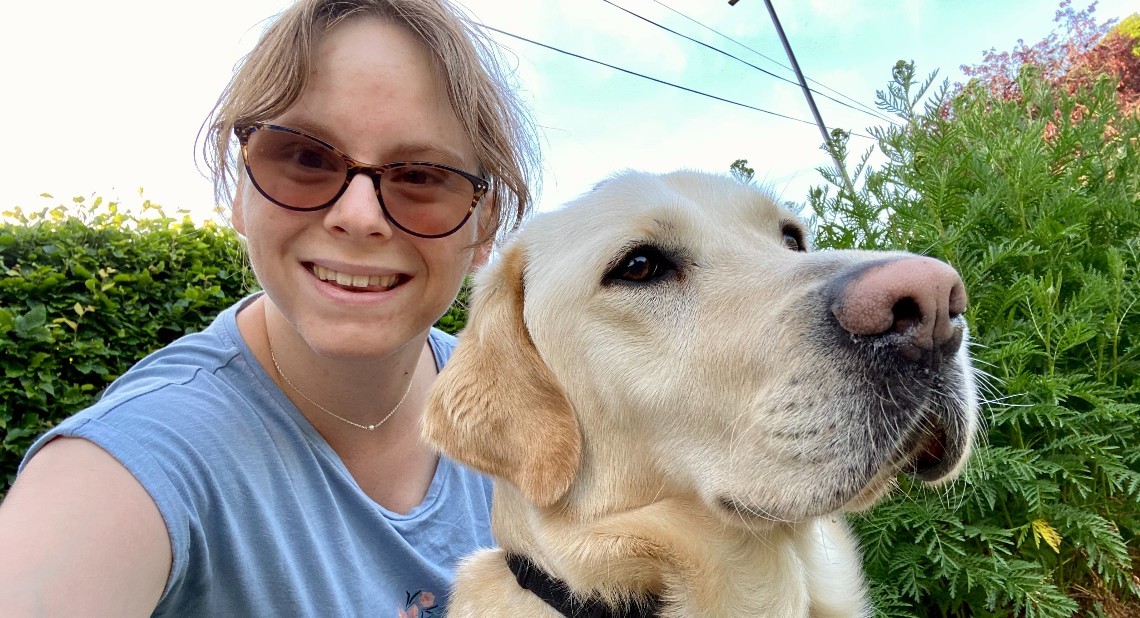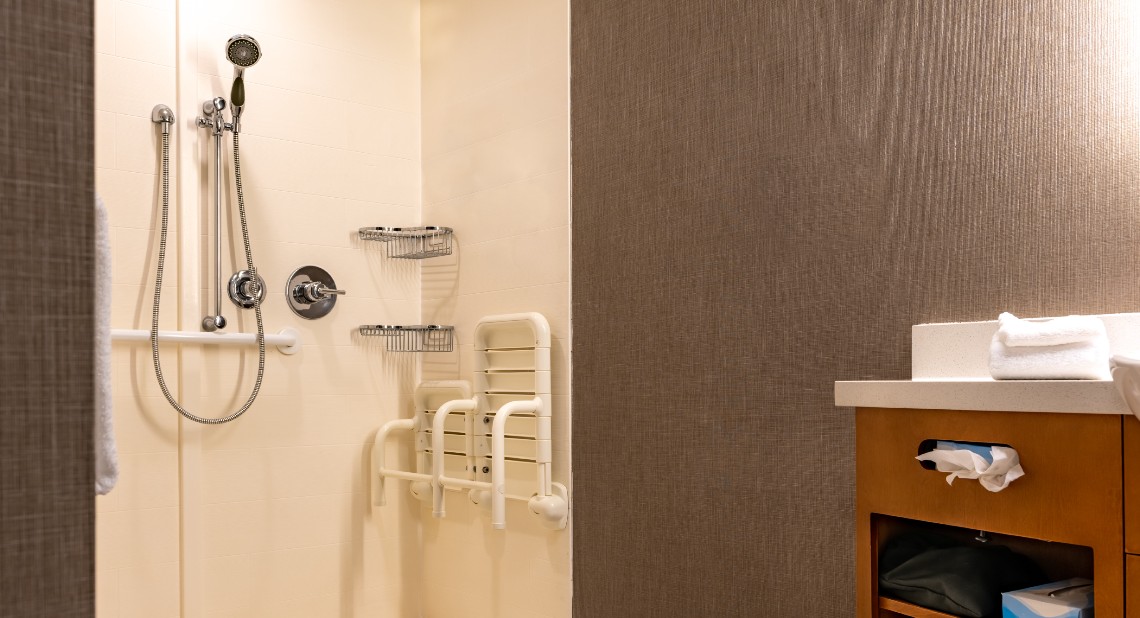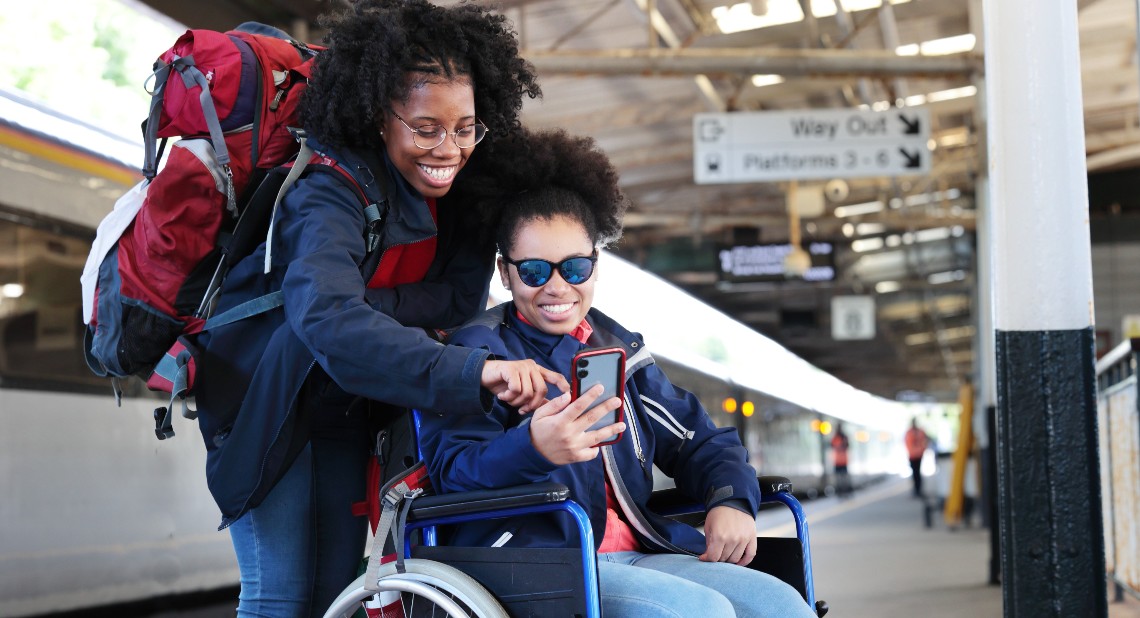Visual impairments can bring unique challenges when travelling. From navigating unfamiliar routes to managing stress and anxiety. In this article, disability blogger Chloe Tear, who is registered blind, shares helpful safety tips. These tips are for carers, friends, and family members to help people with visual impairments travel safely.
Travelling with a visual impairment needs planning. This is especially true if the route is new. You must study the path you’re going to make so you can feel confident during your journey. Many people with visual impairments have had mobility training to help with this.
I’ve been registered blind for around three years now. When I started to lose my sight, I lost a lot of my independence. I also have mild cerebral palsy that affects my mobility. Travelling anywhere felt almost impossible. However, I’ve been matched with my guide dog for a year, which has given me so much freedom and confidence. But it’s still vital to plan my journeys.
Here’s some advice about how to travel safely as a visually impaired person:
- Finding out the best route for you
- Useful apps for getting around if you have visual impairment
- Get your friends and family to help you prepare for my journey
- How to choose the right transport for you
- Always have your essentials with you
Finding out the best route for you
You should start your research with online maps. For me, this is important as I cannot walk too far. Maps can let you know how long the journey is and allow you to zoom in on the area you’re travelling to. If you have some sight, zooming in on maps can help you to better understand your surroundings.
Most of the time, you can also find out about the public transport options available if you do not want to walk.
If I go to a new place, I also try to find a website for my destination. For example, if I want to visit a museum, their website might have information about how to get there. This might include:
-
The nearest train station or bus route
-
Information about accessible parking, and if I can use my Blue Badge
They might also have accessibility information about the venue or discounts for disabled people who require assistance. I’ve found that some places offer large print guides, braille menus, or audio description tours.
If you receive PIP, find out what discounts, freebies and grants you can get.
Useful apps for getting around if you have visual impairment
So many apps can be helpful when travelling with a visual impairment. Here are some of the apps I rely on to get me around safely and confidently:
- Trainline: To check train times as I cannot read the boards since the text is too small for me to read
- Passenger Assistance: To book my sighted assistance when I use trains
- Railcard: For my digital disabled person’s railcard (A disabled persons railcard gets you 1/3 off train travel for you and one other person)
- NaviLens: To locate items that have a NaviLens code, this can include food, entrances or signs
- Be My Eyes: Allows you to phone a sighted volunteer or use AI to find something you need
- Seeing AI: Will read out text, identify money and use AI to describe what’s in front of you
- Google Maps: For directions and live bus timetable information
- Guide Dogs: This allows me to quickly report an access refusal or find information about the legal rights to access places as a guide dog owner
Read more about travelling with an assistance dog in the UK.
Get your friends and family to help you prepare for my journey
If the path is unknown, it’s very important to have support on your first trip. The person who is supporting you on the way should be focused on paying attention to what’s ahead and describing it to you. This could include answering questions like:
-
How wide is the street?
-
Is it busy with pedestrians?
-
Where are the curbs?
-
Is it a one-way street?
-
Where can I cross?
-
What type of crossing is available?
-
Are there any intersections?
-
Is there anything fixed in the pavement I should be aware of?
This information will help you create a route map in your mind to follow when you do the journey again.
It’s good to know if there are memorable spots along your route, like landmarks. It could be some textured paving, or if you have some vision, a brightly coloured shop.
I usually have just one headphone in so I can still hear traffic, but I can hear the guidance on my journey. This helps to keep my attention on the familiar sounds so I know where I am.
How to choose the right transport for you
Travelling by car
For me, travelling by car is the easiest way to get somewhere, especially with my Motability Scheme car. Yes, I have a car. This confuses a lot of people. How can someone who’s blind have a car? Well, with the Motability scheme, I can get a car with up to three drivers on my insurance policy.
When I chose my car, I had a great experience with the Motability Scheme dealer. Everything was straightforward, easy, and enjoyable. My dealership kept in touch the entire time, and the online account meant I could check the progress whenever I wanted. I found my Scheme car dealer on the Motability Scheme website.
Here are some of the things I had to think about when I chose my car:
-
It was easy for me to get in and out of
-
There was enough room for Dezzie (my guide dog), both in the footwell and in the boot
If you’re visually impaired or support someone who is, it’s always helpful to know how tall a car is and if there’s a step up to get into it. For me, a verbal description is helpful. But others might prefer sighted assistance. This is where a hand is guided to the door handle, the roof of the car, or where any steps are. Having this information beforehand can make the process feel smoother and more comfortable.
Travelling feels a lot easier with my Scheme car. Once Dezzie and I are strapped in, we’re good to go! Because I do not drive, I’m in charge of the music. Extra points for singing along. If we’re off on a road trip, my partner likes to give a running commentary of things we’re going past. While this might not be for everyone, I enjoy knowing these details about our journeys.
Travelling by public transport
When I started using public transport with my guide dog, I stuck to shorter routes in my local area. This helped me to build confidence. If I need to go further away using public transport, I try to have a trial beforehand with a friend or family member.
For example, I just started a new job. It was important I could get to my new office safely. I worked with Guide Dogs to help me plan a route, then I went with my partner. He walked behind me, but was there if I was unsure about directions. This gave me a lot of confidence on my first day as I had done the route several times before.
Here are some other tips for using public transport as someone with a visual impairment:
-
Use priority seating
-
Use a tactile map if they’re available
-
Travel at quieter times, if possible
-
Meet someone at your destination, if possible
-
Sit by the door if you struggle to see seats
-
Ask for help if you need it, you’ll find most people are happy to help
Travelling by bus: knowing where my stop is can be difficult. I usually turn on First Bus app to get the route into the maps. The app will show which stop is next and when I need to get off the bus. You can also ask the bus driver to tell you when your bus stop has arrived.
Travelling by train: book assistance in advance. This way, someone from the train company helps you find your train.
If there’s one thing I’ve learnt is it all comes with practice. This includes building confidence in the mobility aids we use. Travelling when you have a visual impairment is hard work. Yet it’s a freeing experience and something everyone deserves to have.
Always have your essentials with you
I always use the same rucksack with different compartments. This allows me to locate items more easily as long they always stay in the same compartment.
Here are some of the things I always take with me when I go out and about:
-
My guide dog Dezzie (pretty crucial!)
-
Walking stick
-
Sunflower lanyard so people are aware my disability may not be apparent
-
Hand sanitiser in case I cannot find a sink
-
Handheld magnifiers to magnify text, menus or timetables
-
Headphones so I can listen to the directions on Maps (or for an audiobook or music!)
-
My phone for helpful apps and to use it in case of an emergency
Interested in joining the Motability Scheme?
Join over 800,000 customers who already enjoy the benefits of an all-inclusive lease package through the Scheme. With the Scheme, you can exchange part or all of your qualifying mobility allowance to lease a brand-new vehicle of your choice. Check if you’re eligible to join the Scheme.
Request a free information pack to learn more about the Scheme.
Related articles
Top tips for using public transport with a powered wheelchair or scooter
If you care for someone with a disability, the Motability Scheme could help
RADAR Keys explained: What are they, where can I use them and how do I get one?
![]()








